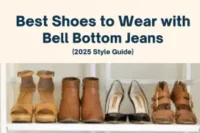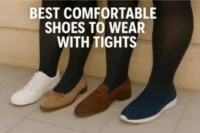Low-Drop Running Shoes: Pros, Cons, and How to Choose
Published: 27 Jul 2025
What Is a Low-Drop Shoe?
A low-drop shoe is a running shoe with a small height difference—usually 1 to 4 millimeters—between the heel and the front of the foot. This smaller drop positions your foot more level, promoting a more natural running form and encouraging a midfoot or forefoot strike.
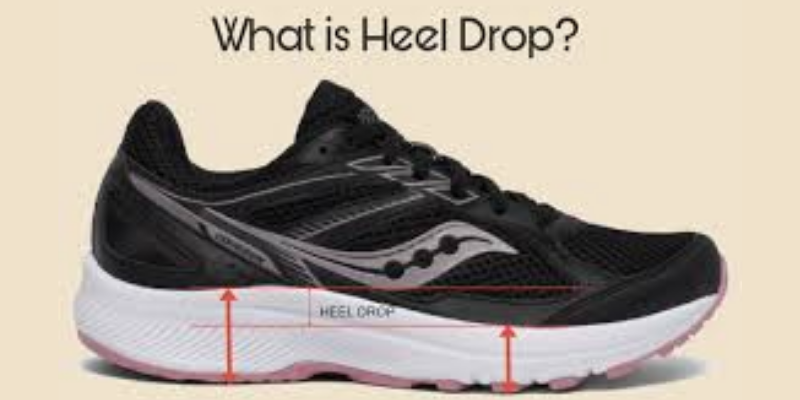
Unlike zero-drop shoes, which offer no drop at all, low-drop models provide a balance between cushioning and natural movement. Runners often choose them to reduce stress on the knees and hips or to help them run more smoothly and comfortably. They’re popular for both road and trail running.
1. How Drop Affects Running Mechanics
The drop in your running shoes—how much higher the heel is compared to the front—can change the way you run. Shoes with a low heel-to-toe drop often lead runners to land on the middle or front of the foot (called a midfoot or forefoot strike). Shoes with a higher drop usually cause more heel striking, where your heel hits the ground first.
Low-drop shoes can also affect your cadence (how many steps you take) and stride length (how far you reach with each step). They shift more work to your calf muscles, ankles, and Achilles, which may take pressure off your knees and hips.
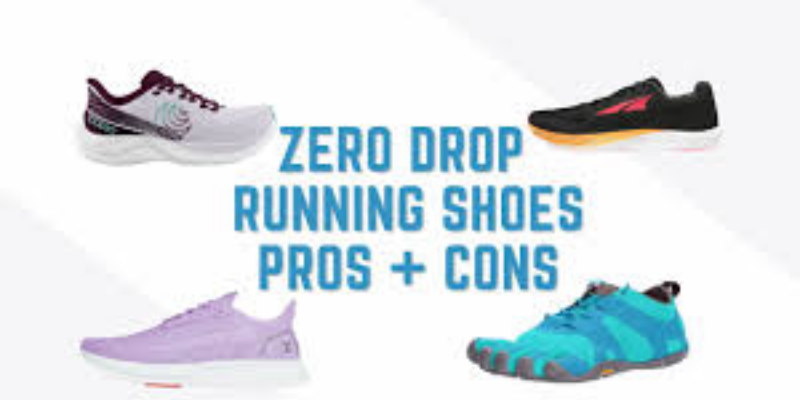
| ✅ Pros of Low-Drop Running Shoes |
|---|
|
| ❌ Cons and Risks to Consider |
|---|
|
2. Who Should Try Low-Drop Shoes?
Low-drop running shoes aren’t for everyone, but they work well for certain types of runners:
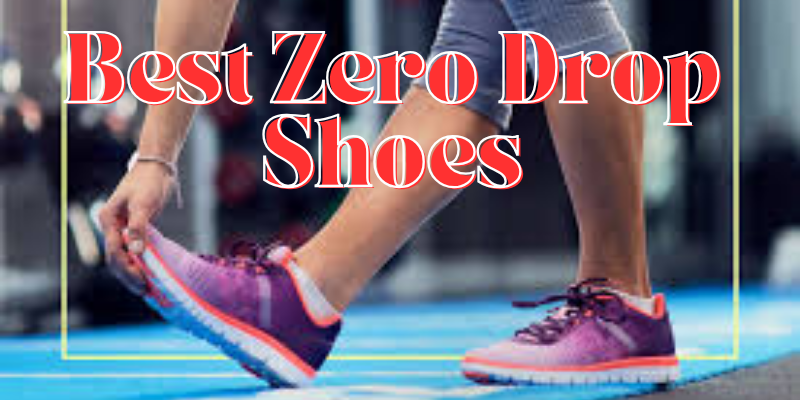
✅ Ideal for:
- Midfoot or forefoot strikers who naturally land closer to the middle or front of the foot
- Trail runners who need better ground feel and balance on uneven terrain
- Runners with knee pain looking to reduce joint stress
⚠️ Use caution if you’re:
- A beginner or just starting out with running
- A heel striker who lands heavily on the back of the foot
- Recovering from foot or lower leg injuries, especially around the heel or ankle
3. How to Transition Safely
Switching to low-drop running shoes takes time. Jumping in too fast can lead to soreness or injury. Here’s how to make a smooth, safe switch:
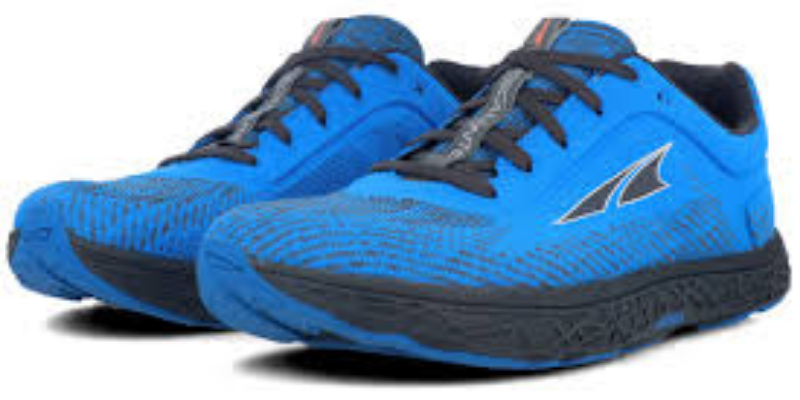
- Start with a gradual drop change
If you’re used to a 10mm drop, move down to 6mm, then 4mm over a few months. Give your body time to adjust at each level. - Do strength and mobility exercises
Focus on building strong calves, ankles, and feet. Stretch your ankles and improve flexibility to support better running mechanics. - Mix them into your weekly runs
Alternate between your regular running shoes and your low-drop pair to reduce strain while you adapt.
4. Low-Drop vs Zero-Drop vs High-Drop
Not all running shoes are created equal. The heel-to-toe drop can change how you move and which muscles take the most load. Here’s how the three main types compare:
| Type | Drop Range | Benefits | Drawbacks |
| Zero-Drop | 0 mm | Natural foot position, strong ground feel | Hard on calves, not great for beginners |
| Low-Drop | 1–4 mm | Balanced feel, encourages midfoot strike | Still requires adaptation, can strain lower legs |
| High-Drop | 8–12 mm | Cushioned heel, easier for heel strikers | Less natural gait, more impact on knees |
Stack Height vs Drop: What’s the Difference?
Many people confuse stack height with drop. Stack height is how thick the cushioning is under your foot. Drop is the difference in height between the heel and the forefoot. You can have a thick, cushioned shoe (high stack) with a low drop—and vice versa.
So a low-drop shoe doesn’t always mean minimal cushioning—it just means your heel and toes are closer in height.
5. Low-Drop for Different Activities
Low-drop shoes aren’t just for runners—they work well in other settings too. Here’s how they perform across different activities:
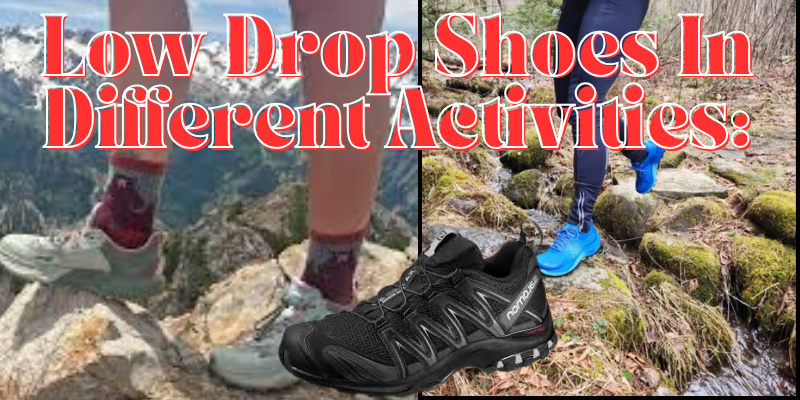
- Running (Road vs Trail)
On the road, low-drop running shoes can promote smoother form and reduce joint stress. On trails, they offer better ground contact and balance, especially on uneven surfaces. - Cross-Training & Gym Workouts
For strength training, high-energy workouts like HIIT, or agility work, a lower drop helps you stay stable and grounded—great for lifts and lateral movement. - Walking & Everyday Use
Some people find low-drop shoes more natural and comfortable for daily walking, especially if they’re working on posture or foot strength.
6. Top-Rated Low-Drop Shoes in 2025
Looking for the best low-drop running shoes this year? Here are some top picks, each offering a great balance of comfort, support, and natural movement:

- Altra FWD Experience
- Drop: 4 mm
- Stack Height: 28 mm
- Best For: Road running and daily training
A beginner-friendly low-drop shoe with soft cushioning and a smooth ride. Great for easing into low-drop footwear.
- Drop: 4 mm
- Saucony Kinvara 14
- Drop: 4 mm
- Stack Height: 31 mm heel / 27 mm forefoot
- Best For: Speed work and lightweight training
Lightweight and flexible with just enough cushioning. Ideal for runners wanting a fast feel without a zero-drop setup.
- Drop: 4 mm
- Topo Athletic ST-5
- Drop: 0 mm (zero-drop, but worth noting)
- Stack Height: 14 mm
- Best For: Gym workouts, short runs, and cross-training
A true minimalist shoe with excellent ground feel—great if you’re transitioning from low-drop to zero-drop.
- Drop: 0 mm (zero-drop, but worth noting)
- Hoka Zinal 2
- Drop: 5 mm (slightly above low-drop)
- Stack Height: 28 mm heel / 23 mm forefoot
- Best For: Trail running and racing
Lightweight, grippy, and responsive—perfect for runners who want a touch more cushion on rough terrain.
- Drop: 5 mm (slightly above low-drop)
These shoes show that low-drop doesn’t mean low support—you can still get plenty of cushion and performance for different running styles and workouts.
7. How to Choose the Right Pair
Picking the right low-drop running shoes depends on how you run and what your body needs. Here are some tips to help you choose:
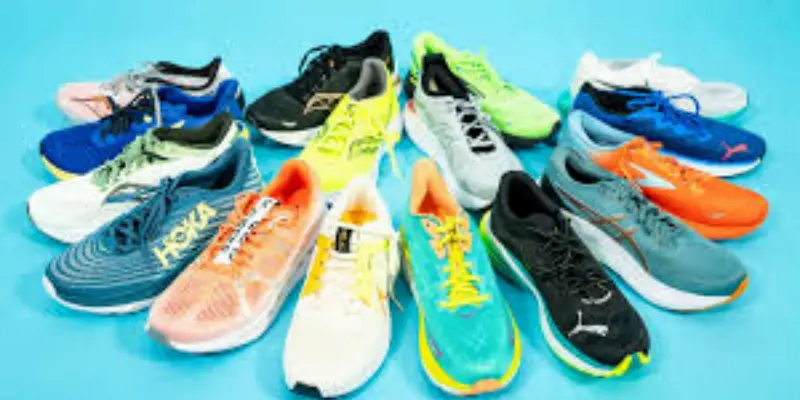
- Match your running style
If you land on your midfoot or forefoot, low-drop shoes can support your natural form. If you’re a heel striker, you may want to start with a higher drop and work down slowly. - Think about past injuries
Dealing with knee pain? A lower drop might help. But if you’ve had Achilles problems or tight calves, go slow and don’t rush the change. - Cushioning vs flexibility
Some shoes offer more cushion and comfort, while others are lighter and more flexible for better ground feel. Choose what fits your needs. - Fit and foot shape
Make sure the shoe matches your foot shape. If you have wide feet, high arches, or need extra room in the toes, look for a shoe that fits well to avoid rubbing or discomfort.
8. Common Myths About Shoe Drop
There’s a lot of confusion around heel-to-toe drop. Let’s clear up a few common myths:
- “Lower drop is always better” – not true
While low-drop running shoes work great for some, they’re not a perfect fit for everyone. Your running style, body type, and injury history matter more than just the number. - Minimalist doesn’t always mean low drop
Some minimalist shoes still have a moderate drop. Likewise, some low-drop shoes come with plenty of cushion and support. - Drop and stack height aren’t the same
Drop is the difference in height from heel to toe. Stack height is the total amount of cushioning under your foot. A shoe can have low drop and high cushion—or vice versa.
9. Conclusion
Low-drop running shoes can improve running form, reduce joint stress, and build lower leg strength. But they’re not a one-size-fits-all solution. If you’re switching from high-drop shoes, take it slow and choose a pair that matches your foot shape and running style. With the right fit and a smart transition, low-drop shoes can be a great option for both training and everyday use.
10. FAQs
Yes, but start slow. If you’re new to running or used to high-drop shoes, ease in gradually to avoid soreness or injury.
Drop is the height difference between the heel and forefoot. Stack height is the total cushioning under your foot. They’re not the same.
Not automatically. They can encourage better form, but good running technique takes practice, strength, and mobility work too.
Yes! Many people find them comfortable for walking, especially if they want better posture or more foot strength.
It varies. Most people need a few weeks to a couple of months, depending on how often they wear them and how strong their legs are.

- Be Respectful
- Stay Relevant
- Stay Positive
- True Feedback
- Encourage Discussion
- Avoid Spamming
- No Fake News
- Don't Copy-Paste
- No Personal Attacks



- Be Respectful
- Stay Relevant
- Stay Positive
- True Feedback
- Encourage Discussion
- Avoid Spamming
- No Fake News
- Don't Copy-Paste
- No Personal Attacks


